
Action buffs who enjoy English history will find much to savor in The Last Kingdom: Seven Kings Must Die. The Netflix epic (now streaming) follows five seasons of The Last Kingdom to chronicle the bloody Battle of Brunanburh in 937 when native Saxons crossed swords with invading Vikings and warriors from Scotland. Both sides suffered huge losses in the brutal Game of Thrones-meets-Braveheart massacre, led by near-mythic warrior Uhtred (Alexander Dreymon). The fight sequence involved 120 stunt performers, 180 extras, dozens of horses, and many gallons of simulated gore.
The story’s tribal politics and archaically named characters like Aelfweard, Aethelstan, and Aldhelm might be hard to follow at times, but the combat choreographed by stunt coordinator/second unite director Levente Lezsák makes it spectacularly clear: Seven Kings Must Die thrives on precisely choreographed chaos. Stunt fighters in close quarters who appear to be stabbing, slashing, and beheading each other en route to Valhalla had every move orchestrated in advance by Lezsak and his team. Lezsak, who previously worked on Underworld and Witcher, spent most of the past eight years recreating ancient warfare for The Last Kingdom saga.
Speaking from his farm in Hungary, where Seven Kings Must Die was filmed, Lezsák drills into his battlefield inspirations ranging from Viking re-enactor videos to 15th-century textbooks on the science of horsemanship
Your battle sequences are so visceral; they seem reminiscent of Braveheart and Game of Thrones’ now famous “Battle of the Bastards” episode. Your fight scenes are so visceral that the viewer feels completely immersed in the action.
I try to keep away from any other shows, especially the most popular ones, because I try to find my own way of creating a battle. But obviously, there are impressions from my life. Braveheart, for example, was one of my favorites when I was a kid. The big battle was so stunning; everybody wanted to be Scottish when they came out of the theater. The thing I realized from Braveheart that I’ve carried throughout my career is that every action sequence has to serve the story. If you just do action after action it becomes boring after maybe a couple of minutes and people will lose interest. The big battles of Braveheart were great because they were character-driven, and that was the case with The Last Kingdom as well. Each battle represents some kind of turning point in this ongoing journey of Uhtred.
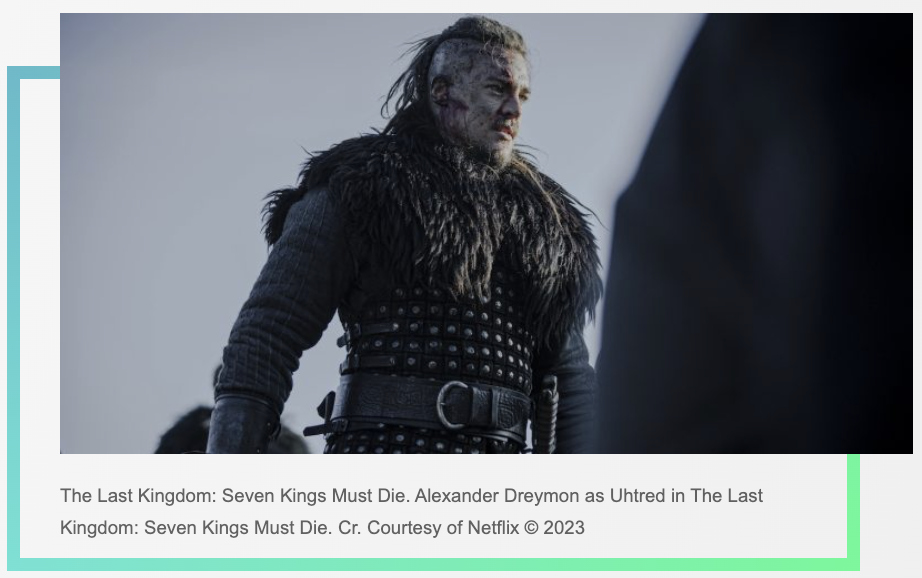
Martial arts play such a dominant role in contemporary fight choreography, but these battles take place in 10th-century England. How did you structure these fights so they felt authentic to the period?
Even though people usually always think about martial arts as being Chinese or Japanese, we also have a beautiful European martial arts tradition that started to flourish in the Middle Ages. I also did research on how the Vikings used their short swords and their shields. There are lots of great re-enactment people keeping the Viking tradition alive, and they use the weapons authentically, so I watched their videos.
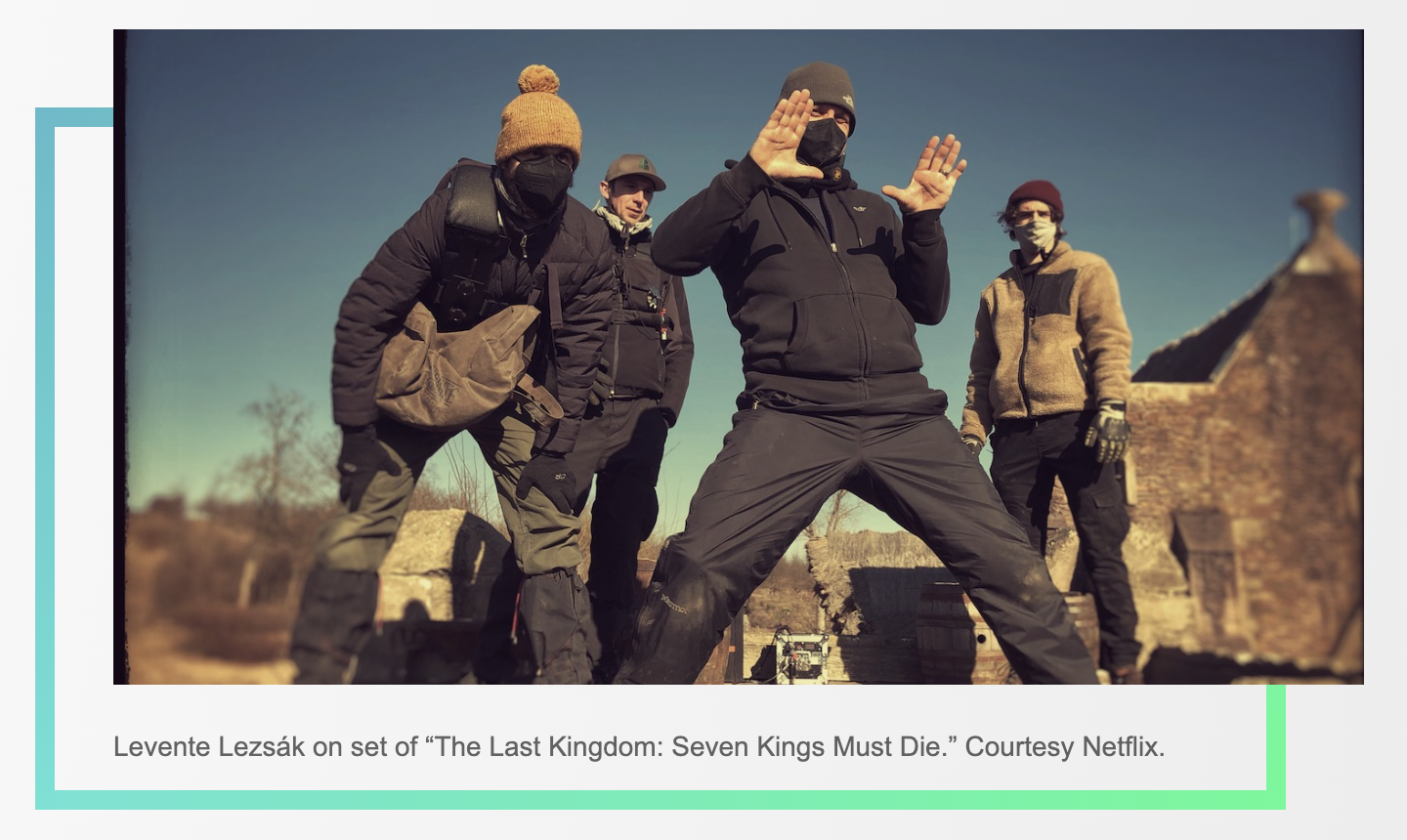
How did you train the stunt performers in these traditions?
On my farm, I ran a boot camp for the stunt team and trained them step by step until they felt like they’d been using these weapons for ages and they were part of their bodies. You can easily see the difference between someone who’s just trying to copy a fight style as opposed to having it come from inside. That’s why I did all this research for the fight choreography, and it’s why you feel these battle sequences are accurate. I tried to be faithful to history as much as I could.
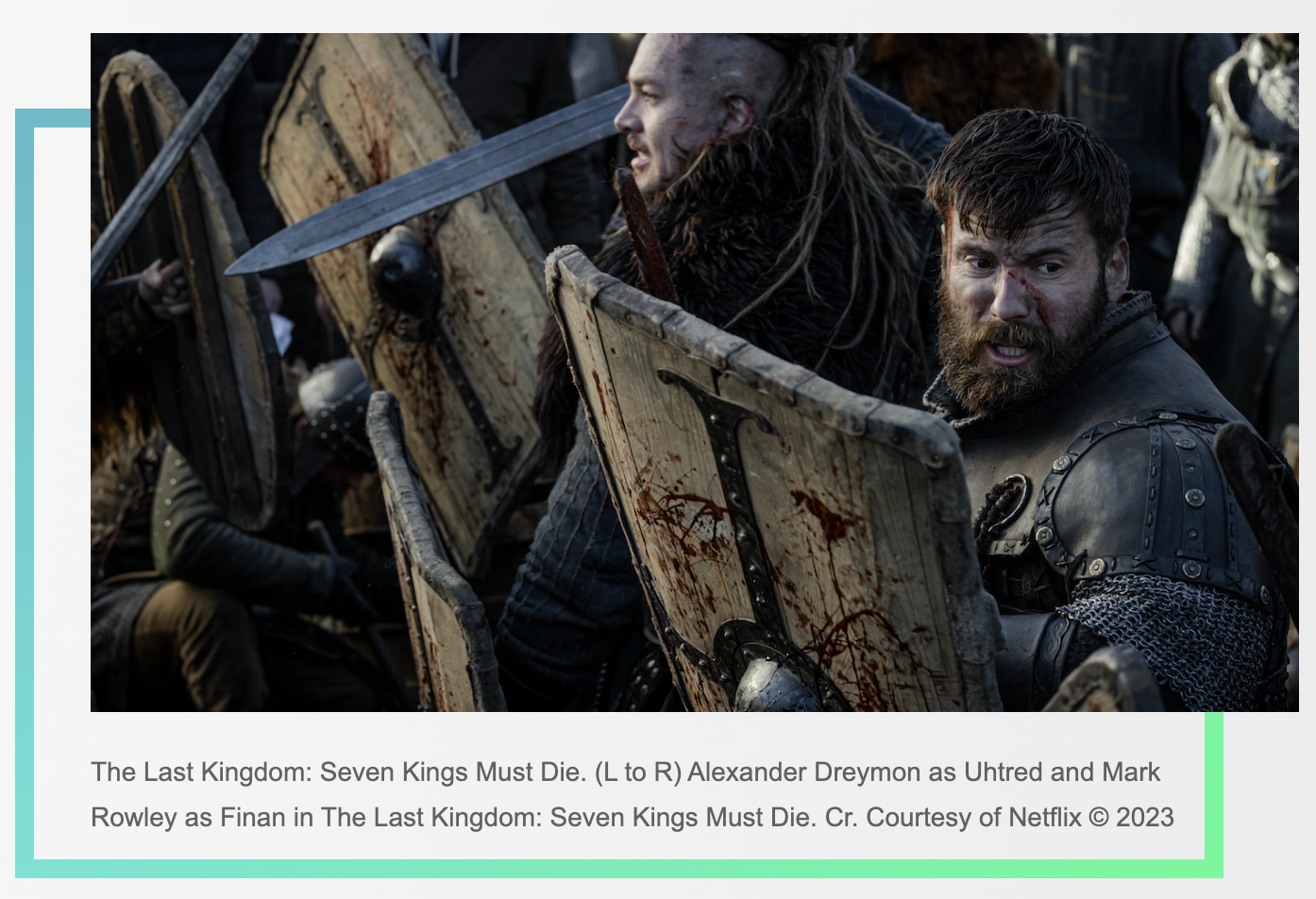
A lot of characters come and go throughout The Last Kingdom, but Alexander Dreymon carries the story from start to finish as Uhtred of Bebbanburg — “Born a Saxon but raised a Dane,” as he says throughout the story. What was it like working with Alex on this role?
He’s a really tough guy. Alex has a great horsemanship background and also martial arts, including jiu-jitsu. Before we started season one, I had three weeks of boot camp with him and Emily Cox, who plays [Viking warrior] Brida. That gave me the time to teach him this very different fight style. The Viking short sword, his own [long] sword, the shield — all of that requires very specific skills, so Alex had to practice until he became a good warrior. And through all the seasons and this movie — eight years of our life — Alex got better and better as he gained more confidence and more technique.
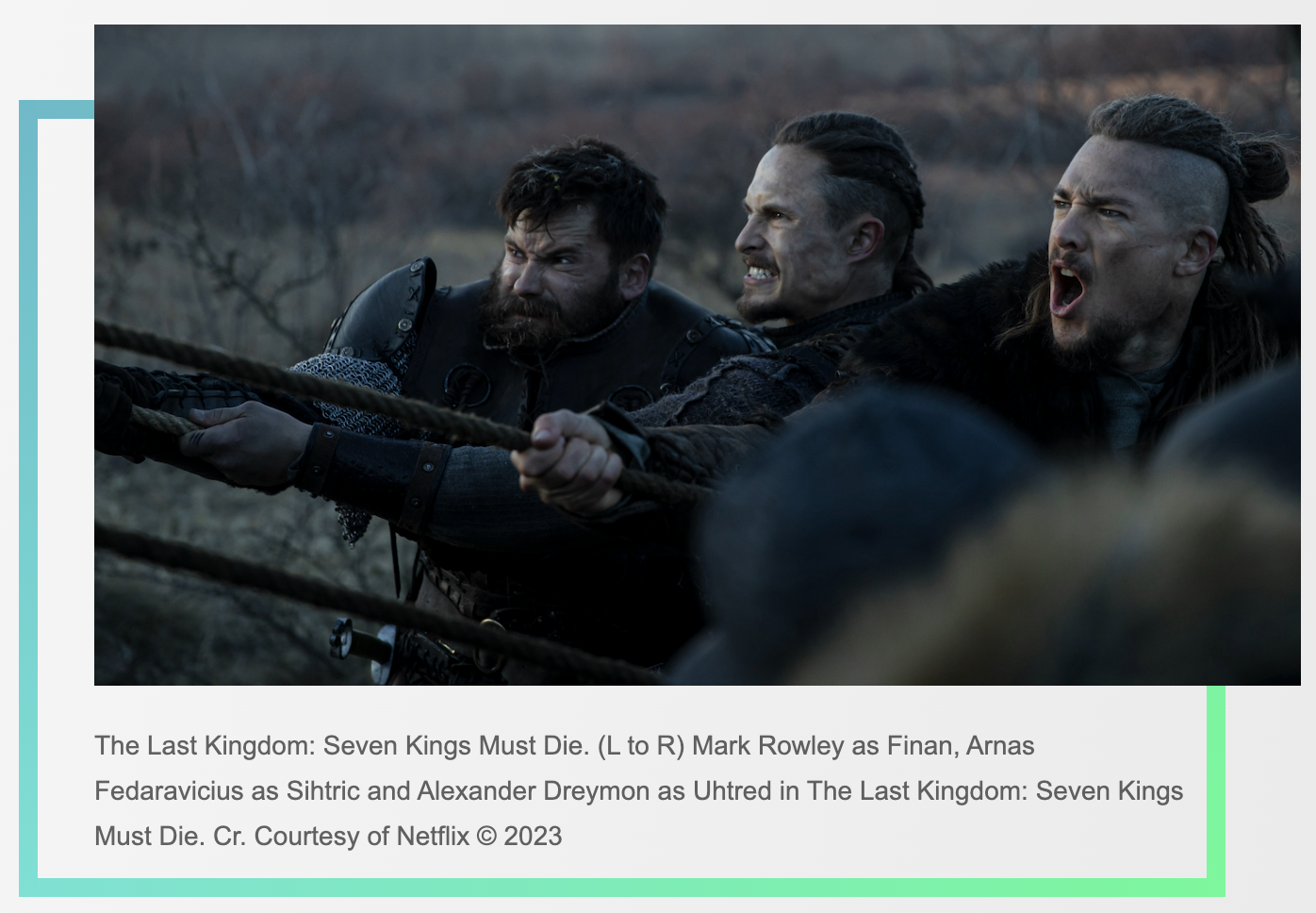
In Seven Kings Must Die, how many fighters did you put on the field for that climactic battle between the Saxons and Vikings?
We had 120 stunt performers and with extras, a total of 300 for the final battle sequence.
What was your schedule for shooting the final Battle for Brunanburh?
Almost two weeks, plus a couple of Second Unit days.
How did you prepare?
We had a page-turn meeting with the director [Ed Bazalgette], the producer, the DP [Luke Bryant], and the first A.D [Zsolt Tolmár]. We shared our ideas and discussed what we wanted to do. Then the rehearsals took about three weeks for stunt riders, stunt horses, and stunt performers. We practiced formations like shield walls and other formations. Then we rehearsed with costumes. That’s how we proceeded toward the end result.
It’s impressive to watch this very disciplined Viking army operating like one giant, well-coordinated unit.
The shields were a big part of the strategy because the Vikings were the first to figure out how to raise their shields in unison and effectively form a wall. We had page-turn sessions to go through the script and then used pre-vis to plan how the should look.
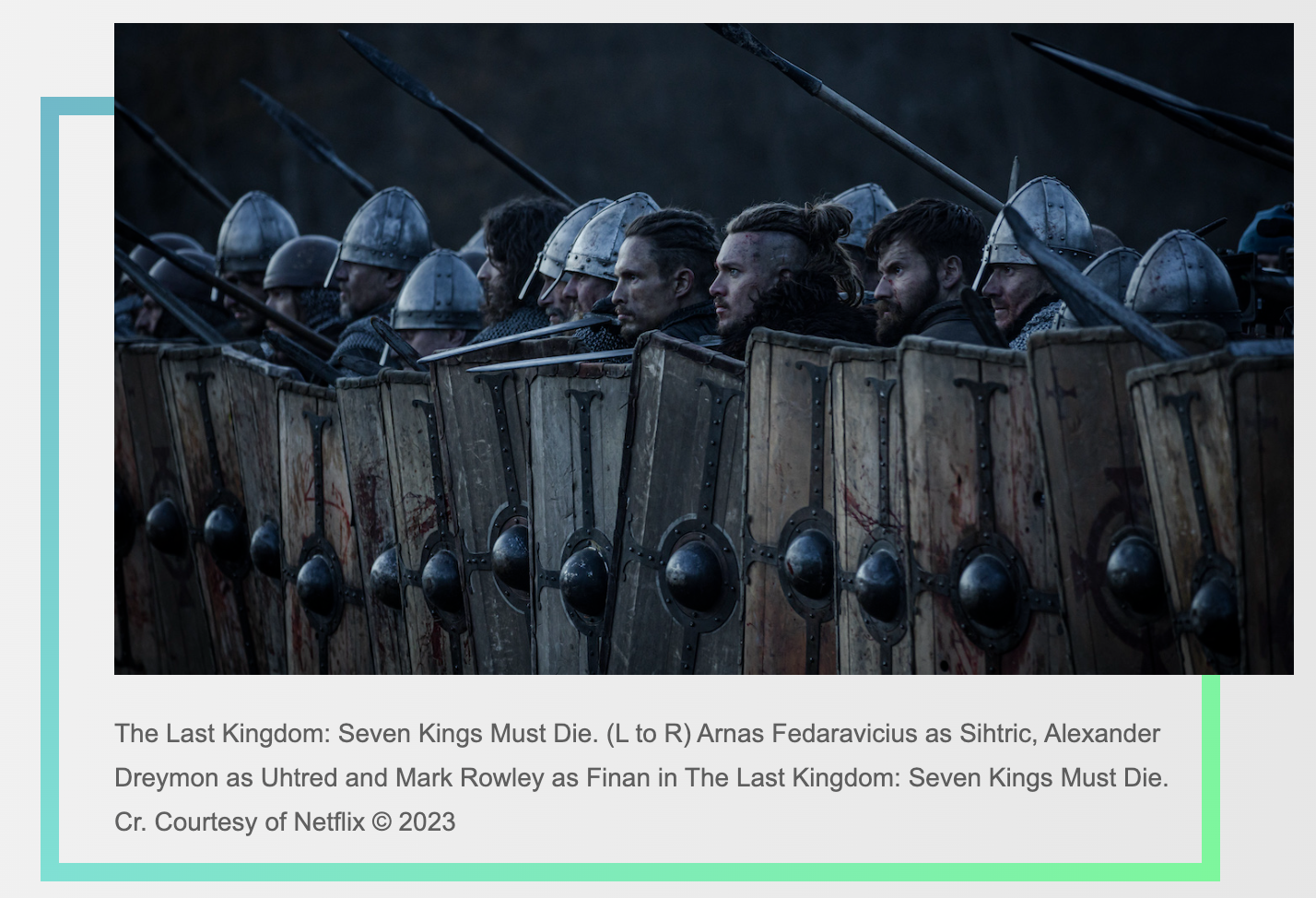
Horseback warriors come to the rescue midway through the Battle of Brunanburh. How did you guide horses into these noisy crowds of stuntmen without causing the animals to panic?
Horses are fleeing animals. It’s abnormal for them to be part of a huge battle sequence. But on the other hand, you can train them for fights with “natural horsemanship.” This method shows you how to deal with body language and make deep bonds with horses. Once they admit you as a member of the herd, as an “alpha,” then you can teach horses tricks. But they have to understand you and fully trust you. I also studied lots of books from the Middle Ages because [in Europe] we have a military tradition that includes great horse masters from the 15th century who wrote about how to train horses for warfare. I’m really proud that we had no injuries or accidents with horses during the filming of this show.
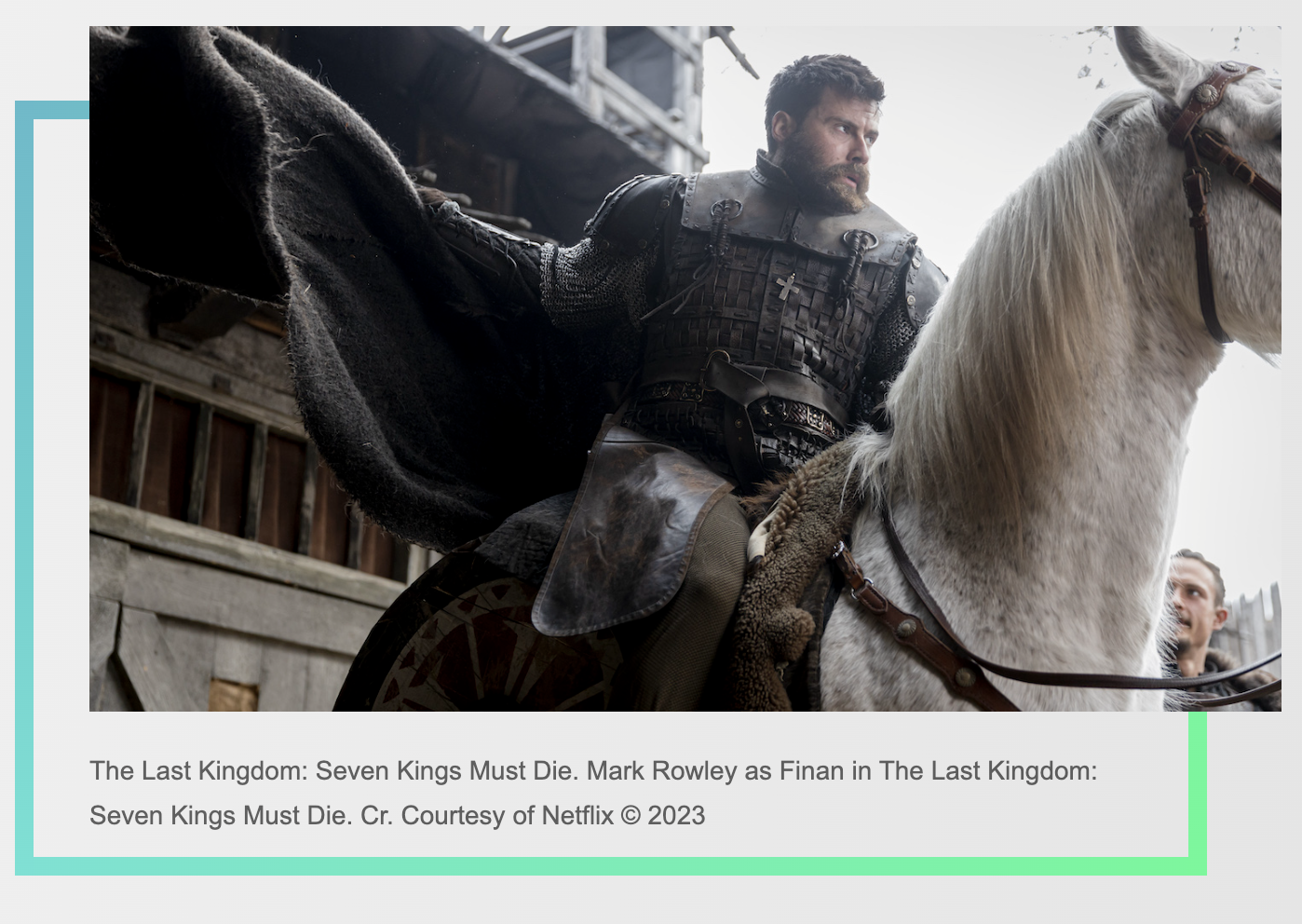
Like most fight choreographers, you started your career as a stuntman yourself. Have you suffered any broken limbs?
I’ve been lucky. I had one femur broken at the beginning of my career in 1995. I did a stunt with a horse in an open theater in Austria. I was playing an Apache Indian. My leg is pretending to be stuck in a stirrup and the horse is dragging me. That was the stunt. I did many takes but one time I made a small mistake and broke my femur. I also broke my little finger once and a couple of ribs but they don’t really count. The femur was the big one.
Do you still perform stunts yourself?
Yes. I did a car turnover two months ago. Nice stunt. If you’re the guy who’s leading a team into danger, I feel like you have to take the biggest risk, so even now, if it’s a dangerous stunt where someone could die if it goes wrong, I’ll usually do it. In The Last Kingdom, when [Uhtred’s father] Ragnar comes out from the barn fully on fire and kills a couple of guys? That was me. I did the full-body burn.
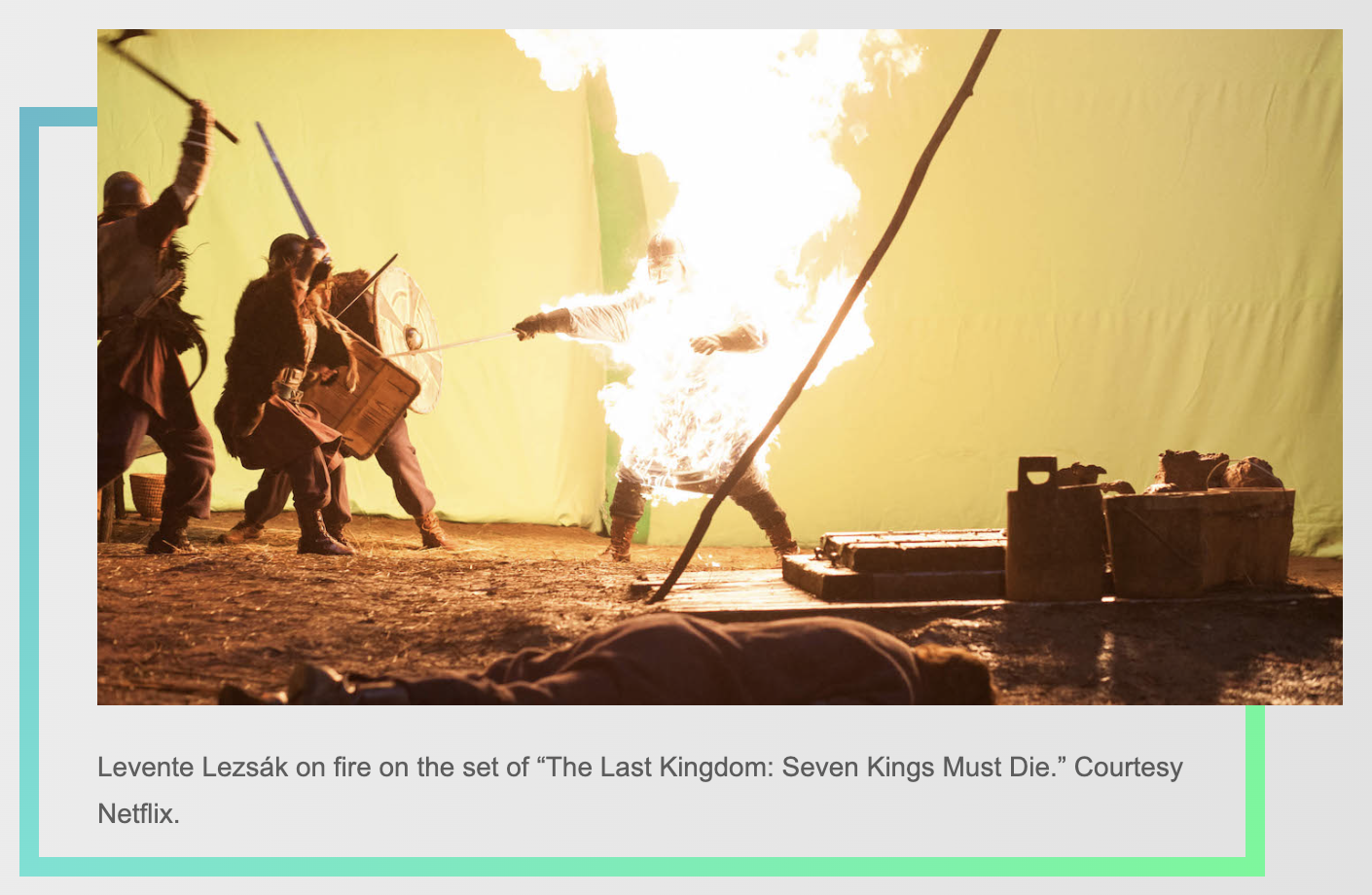
This article was first published on The Credits